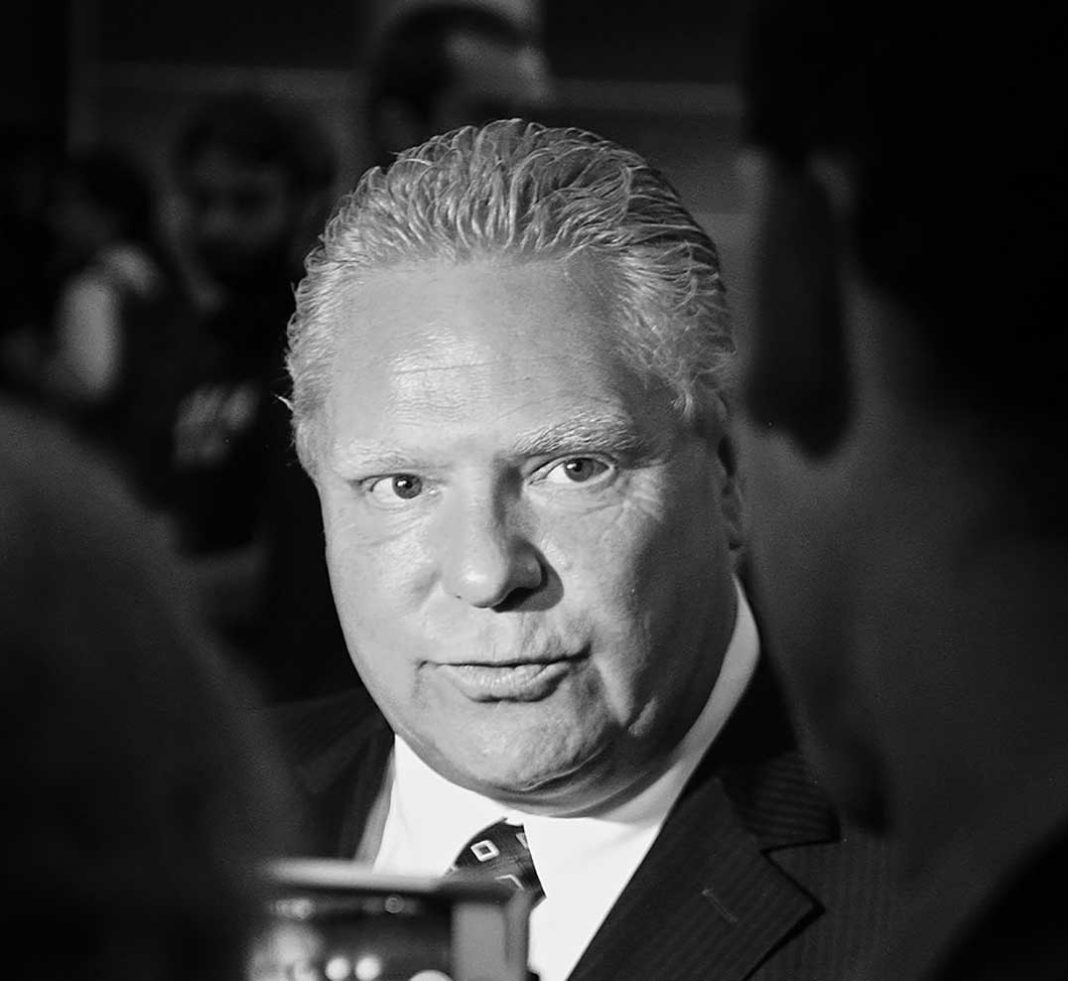TORONTO—Citing overenthusiastic Liberal spending and a disputed $15 billion deficit hangover, Premier Doug Ford and his new “government for the people” announced severe cuts to a wide range of programs aimed at the province’s most vulnerable sectors and the arts, while backing off from a decision to walk away from mediation with the politically powerful Ontario Medical Association.
“We definitely are seeing some pretty drastic cuts to education,” said Algoma-Manitoulin MPP Mike Mantha. “Those cuts are to programs that serve those students who need help the most.”
Mr. Mantha said that the government had “tried to slip the cuts through on a Friday night.” But by Saturday morning school boards across the province were scrambling to determine how the cuts were going to impact the school year budgets that were already well on their way to being spent.
The Rainbow District School Board remained uncertain on how the cuts were going to impact the board, but the chair of Ottawa’s largest school board was on record as saying that a memo announcing cuts to specialized education programs across the province had taken her by surprise.
“It is too early to really have a handle on what the specific impact of the cuts will be,” said Manitoulin Rainbow District School Board Trustee Margaret Stringer, whose portfolio with the board includes both special needs and on the First Nations advisory committee. “We don’t yet know what eh cuts will be locally, but those programs do support vulnerable students,” she said, “including First Nation students. It is virtually certain that students will be impacted.”
The ministry of education announced late Friday afternoon it would be not be providing $25 million in funding for specialized programs in elementary and secondary schools. The cuts will mean the end of a number of initiatives for at-risk youth, including an after-school program run by teens in low-income areas in attempt to stem the factors contributing to Toronto’s “summer of the gun.”
The cuts will also affect programs that encouraged physical activity among students and offered in-class tutors to children, as well as supports for racialized youth.
The target of the education cuts are 11 grants administered through the Education Programs—Other (EPO) section of the provincial funding envelope and is separate from the general operating fund. The EPO fund tallies in at some $400 million across the province’s 27 school boards, but not all school boards implement the same programs or access the same amount of funding.
On Friday, the province sent a memo to school boards that read: “Despite only accounting for less than one percent of school board funding, this fund has a long track record of wasteful spending, overspending and millions of dollars of unfunded commitments. We have performed a thorough review of the EPO fund to ensure that it better aligns with the needs and priorities of Ontario parents, teachers and students while respecting taxpayer dollars.” The memo did not specify how the spending had been wasteful or overspent.
The Ontario government has also slashed base funding to the Ontario Arts Council (OAC) by $5 million, as well as half of the $5 million allocated to the Indigenous Culture Fund. The cuts have been called an attack on reconciliation by Indigenous artists and art organizations across the province.
Anishinabek Nation Lake Huron Region Chair and Nipissing First Nation Chief Scott McLeod said he is disappointed following the news that the Government of Ontario will be making funding cuts to the Ontario Arts Council and to the Indigenous Culture Fund.
“The fund existed to extend beyond simply ‘the arts’,” noted Chief McLeod. “It was intended to support youth and elders and provide programs to revitalize culture and language. The Indigenous Culture Fund could have been essential for allowing Indigenous communities to take an active role in repairing the losses incurred due to the legacy of Residential Schools.”
“This is really of some concern,” admitted Ojibwe Cultural Foundation Executive Director Anong Beam.
The OAC, which also provides grants and services to Ontario-based artists and arts organizations, will see its base funding for 2018-19 drop from $69.9 million to the 2017-18 level of $64.9 million.
Ontario NDP culture critic Jill Andrew said in a tweet that “The government’s cut of $2.25 million to the Indigenous Culture Fund at the Ontario Arts Council is a disturbing step back from the TRC’s Calls to Action. This and the $5 million cut to @ONArtsCouncil’s base funding is an alarming attack on arts and culture.” The ICF had been set up by the previous Liberal government with a $5 million annual budget to address issues arising from the Truth and Reconciliation Committee.
The move, which the province has characterized as “a review,” comes five months after the Progressive Conservative government cancelled sessions to update the Ontario school curriculum with Indigenous content. Both the curriculum update and the ICF were responses to the Truth and Reconciliation Commission of Canada (TRC).
In another announced set of cuts, the province will be completely defunding the Ontario College of Midwifes in a move the organization calls “disappointing.”
“Midwives really do shoulder a proportionally higher burden of professional fees through our regulatory college to begin with,” said Elizabeth Brandeis, Association of Ontario Midwives (AOM) president on Friday. “So this cut of government support really does put that extra burden on midwives.”
Midwives work in about 100 communities across the province and deliver about 15 percent of babies born in Ontario, according to the AOM, but the association notes that there is already far greater demand for services than the province’s 956 registered midwives can provide. “We know upward of 25 to 40 percent of people who want to have a midwife can’t currently access a midwife,” said Ms. Brandeis.
The Ontario College of Midwifes has been receiving government funding for 25 years.





